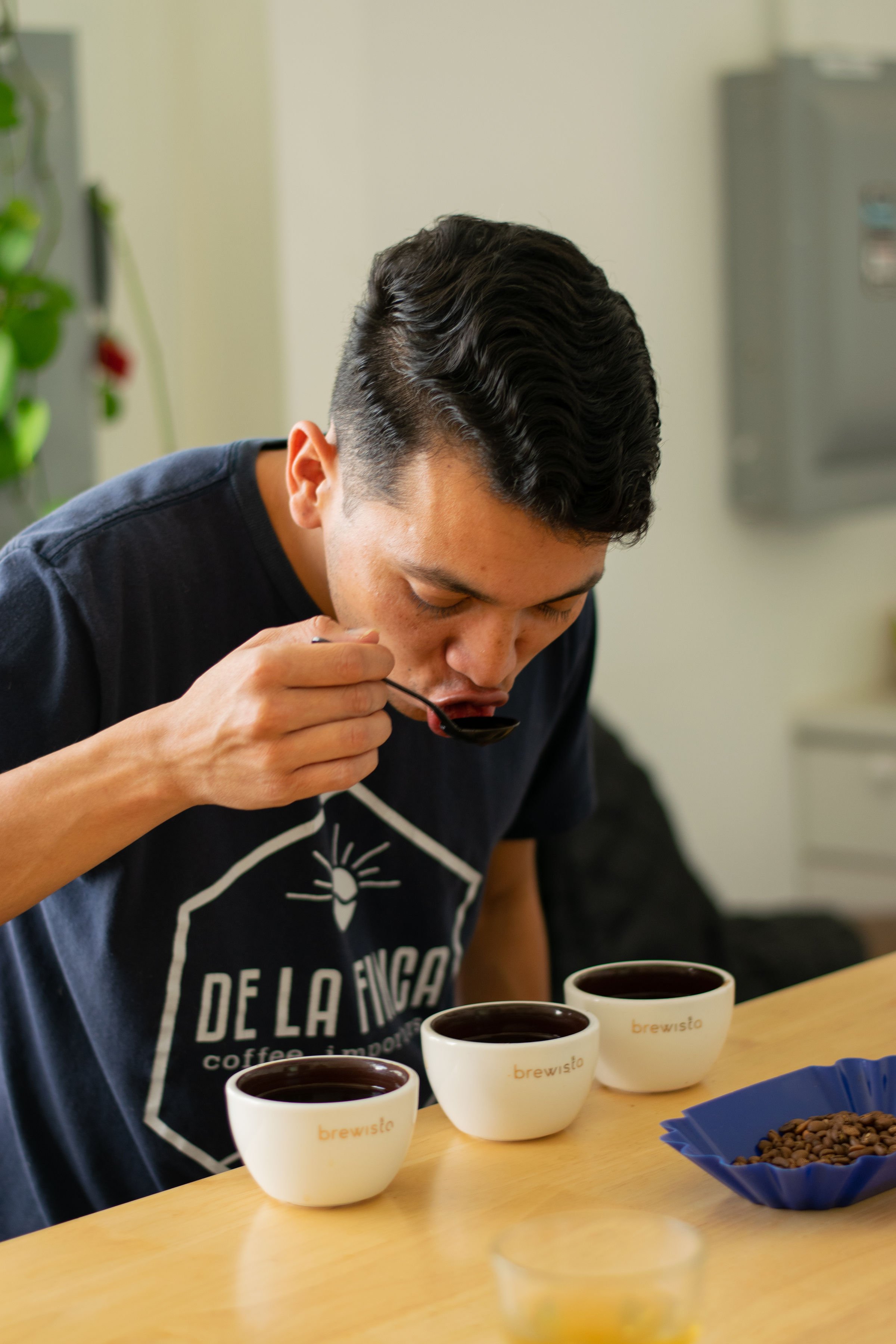Beginner's Guide to Cupping Coffee
If you're new to the world of specialty coffee, one practice you may have heard about is "cupping." Cupping is a method of evaluating and tasting coffee that allows you to fully appreciate the unique characteristics of each coffee.
What is cupping?
Cupping is a standardized method of tasting coffee that involves evaluating the aroma, flavor, and overall quality of a coffee sample. It's used by coffee professionals to determine the quality of a coffee offering in order to make informed decisions about the beans primarily for purchasing, roasting, and production.
How to cup coffee
Here are the basic steps to cupping coffee:
Select your coffee samples: To begin cupping, you'll need a coffee sample. This can be one sample or multiple samples from different regions, varietals, and processing methods. Ideally, you can start with 3-5 samples to cup.
Measure and grind the coffee using the same amount for each sample. Grind each coffee sample to a consistent size, typically medium-fine. Clear the grinder between coffees so there is no residual coffee from one sample to the next.
Smell the coffee: Before adding water, take a moment to smell each coffee sample. Take note of the differences between each sample. This will give you an idea of the coffee's aroma and what to expect from the flavor.
Add hot water: Pour hot water into to the individual cups (same size and amount), covering the grounds, and let them steep for 3-5 minutes.
Break the crust: Once the coffee has steeped, use a spoon to gently break the crust that has formed on top of the coffee. This will release more aroma and allow you to better evaluate the coffee's scent. Smell and note each coffee, then clear the top grounds from each cup.
Taste: Using a cupping spoon, taste each coffee sample and evaluate its flavor, acidity, body, and aftertaste. Try to slurp the coffee in a way that sprays a small quantity across your tongue to full experience the cup. Take notes on each sample so you can compare them later.
Compare and evaluate: After tasting each sample, compare your notes and evaluate each coffee's overall quality. Take into account the aroma, flavor, body, and aftertaste.
Common cupping terms
To fully appreciate cupping, it's important to understand some common cupping terms:
Aroma: The scent of the coffee.
Flavor: The taste of the coffee.
Acidity: The tartness or brightness of the coffee.
Sweetness: The level of sweetness of the coffee.
Body: The weight or thickness of the coffee.
Aftertaste: The flavor that lingers after you've finished drinking the coffee.
Cupping is a great way to explore the diverse world of specialty coffee and to better understand the unique characteristics of different coffee beans. It may feel a little intimidating or unusual at first, but with a little practice, you’ll be a pro in no time.
You're now equipped to get starting start cupping your own coffee and discovering the flavors and aromas that make each cup of coffee unique. Happy cupping!
Cupping Spoons
Need a cupping spoon? Try one of our own DLF engraved cupping spoons available in matte black, blue, or silver.


